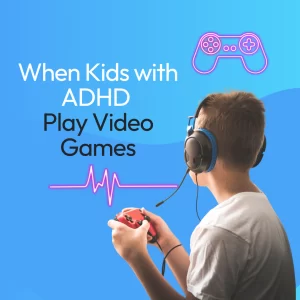Introduction
In Dr. Catherine Bradshaw’s 2015 article published in the journal of the American Psychologist (Link provided below), she offers us an understanding of the current state of bullying prevention programs around the nation, and around the world. The first point she highlights is the importance of bullying prevention. She notes the detrimental effects that bullying has on behavioral, mental health, and academic outcomes. Not only for those who are victimized but also for youth who bully and youth who witness bullying. She also notes that the number of bullying prevention programs being used by schools has increased dramatically since the 1990s, and that [nearly] all states have passed laws related to bullying. Many of those laws encourage the use of programs or official strategies to prevent bullying. Unfortunately, she concludes her introduction by highlighting the fact that while there is a growing number of these school-based programs, relatively few programs have been formally tested to ensure they are working.
Are Bullying Prevention Programs Effective?
Features of Promising Bullying Prevention Programs:
There are some features we know to be associated with more effective bullying prevention. At the level of the teacher there is evidence showing closer supervision on the playground, the use of consistent disciplinary methods, and classroom management strategies have all been shown be effective. Classroom and schoolwide rules related to bullying and teacher trainings are also features of effective programs. Another effective element includes the use of parent trainings, meetings, and information exchange (question & answer forums, bullying awareness material, etc). Finally, the amount of time and the intensity of the trainings have been found to be positively associated with successful programs. With extended/consistent program trainings producing quality results.
Recommended Bullying Prevention Approaches
Public Health Approach to Bullying Prevention:
If you work in education and are familiar with PBIS (Positive Behavioral Interventions and Supports), then you are familiar with the three-tiered public health model approach to bullying prevention. The idea of the three-tiered, pyramid-type, intervention system is that most students will respond to the basic level of intervention, the Universal Intervention. Think of this as the foundation of the pyramid. The second tier, the Selective Interventions, a smaller group of students, around 10-15%, is targeted. And in the third tier, the Indicated Interventions, a much smaller groups of students, around 5%, are targeted individually with specific interventions.
Universal Interventions may include things like a focus on improving school climate, shifting the norms about bullying, and targeting bystander behavior. These types of efforts will effectively reduce bullying for the majority (80%) of the student body. Selective Interventions include more specific social skills training and instruction about emotional-regulation for small groups of youth identified at risk for becoming involved in bullying. An example of Indicated Interventions might be to address specific mental health concerns regarding an individual student, or specific concerns about the youth’s family. Tiered systems allow for students to be met with the appropriate level of intervention based on their individual needs.
Multicomponent Programs:
It is recommended that schools implement multiple integrated systems of intervention. Dr. Bradshaw recommends programs that incorporate classroom level discussions about bullying, social-emotional skills, and strategies for responding to bulling with school-climate efforts aimed at reducing aggressive behavior, and increasing student support. These kinds of multicomponent programs provide children with direct instruction on replacement behaviors and skills for avoiding and effectively responding to bullying.
Schoolwide Prevention Activities:
Schools are recommended to address their social environment and broader culture and climate of bullying. Given the relationship between school climate and bullying, activities that improve safety, engagement, and culture are thought to translate into bullying reduction. School-wide prevention efforts that incorporate staff at every level and monitor students in every context (i.e., in class, during lunch, at recess, it the hallways, etc.) are likely to function well in bullying prevention. Additionally, many schools are using Mindfulness as a way to help students increase self-awareness and help-seeking.
Involve Families & Communities in Bullying Prevention:
Dr. Bradshaw notes the critical role played by families in preventing bullying at school. Families can support children in the development of coping skills, and also the disclosure of incidence of bullying so that school officials can more quickly address the behavior. Additionally, parents benefit from training in how to talk with their children about bullying, how to communicate their concerns about the bullying to the school, and understanding new ways to get actively involved in school-based prevention efforts. Dr. Bradshaw is quick to remind us that a family that eats dinner together 4 or more times per week is enough to mitigate the negative effects of bullying. And that a caring adult, in any position, can intervene when they see bullying.
Sustained and Integrated Bullying Prevention Efforts:
Adopting different programs to address each new problem that emerges may be tempting. However, recent research indicates that schools are implementing approximately 14 different programs to prevent violence and promote a safe learning environment. This kind of expansive programming can be overwhelming for staff, and lead to confusion about the goals and objectives. The inconsistency that trickles down to the students means fidelity is poor, and expectations are confusing. Programs that have a broader focus on preventing aggressive and disruptive behavior by addressing social-emotional skills, interpersonal conflict, and behavioral inhibition would address bullying in addition to other problem behaviors. There will be considerable planning involved in this type of intervention development and implementation, and the commitment to use a continuum of positive, and proactive supports, instead of traditionally reactive and punitive approaches to discipline.
Focus on Program Fidelity:
Forming a counsel to lead the implementation, help with the integration of programs, and monitor outcomes can be a critical first step in ensuring project success. Students and teachers can both be represented, and tasks can be developed and assigned. Outcomes should be articulated and data should be tracked to best understand the effect-size of the program. An AP Statistics class may be a good source of help with the data collection and analysis!
Future Directions in Bullying Prevention Research and Programming
Bullying Prevention Measurement Challenges:
“One problem in bullying prevention programs,” Dr. Bradshaw writes, “is assessing the outcome of bullying.” We understand what bullying is, but identifying it in a given moment is very difficult. How can a person determine, in the moment, if an interaction between two students meets those three criteria of being 1) intentionally hurtful, 2) directed at a person without power by a person with power, and 3) falling in a pattern that is repeated over time? Researchers generally agree that self-reports are among the most valid indicators of bullying, as opposed to observational data, peer reports, or teachers’ ratings. It is also well established in the literature that the extent of agreement regarding the perceived problem and prevalence of school bullying varies across informants. Said another way, rates of bullying depend on who you ask. It is important for program development and program outcomes for us to understand a program may show significant impact on children’s bullying-related attitudes and teachers’ observations of bullying, but may not significantly change student self-reports of bullying. Which was the case for a bullying prevention program called Steps to Respect. It can be all too easy for school personnel to dismiss bullying as something that is not a part of our school, but we have to remember that the CDC Data clearly identifies around 20% of our youth as being victimized by bullying.
Rigor in Study Design:
There are a “large number of programs currently in use,” notes Bradshaw. Establishing evidence to support a program is difficult because of the sheer number of programs and the difficulty in implementing a program to fidelity. Bradshaw notes that implementing a particular program effectively, even one that has been shown to be empirically effective, is not a “guarantee that bullying intervention/prevention efforts will be effective” because the program is being “implemented in a different setting or in a different cultural context.” Additionally, most program evaluations suffer from “short follow-up periods” (e.g., a single school year). This short time span may not allow for “contextual changes, such as improvements in the school climate or increases in staff supervision and intervention.” Given the difficulty in replication, schools choosing to use specific programs, should consider how they are going to monitor changes in their student body/teachers over time. Bradshaw notes, specifically, that the process of change is likely slow when factors such as norms about retaliation and bystander intervention are the target of intervention.
What Works for Whom?
Programs may require specific evaluation if the school environment where they are being implemented differs from the setting or context of research origin. Establishing effectiveness could be difficult given specific “cultural or community contexts in which students or families who report bullying are shunned by their peers or other community members, thereby potentially compromising the effectiveness of approaches which emphasize reporting bullying to adults.” Schools can also choose to consider if identifying individual characteristics of the child, peer relationship, school environment, and bullying situation are serving as risk factors or protective factors for involvement in bullying. Identifying the risk factors for children will help identify the potential targets. Identifying the potential targets will help us insulate them with protective factors.
Conclusion
Consideration of Values & Conclusions
Dr. Bradshaw concludes the article by mentioning “the recent tragic acts of violence in American schools” that “remind us of the importance of mental health promotion within this context [schools]. She reiterates the importance of emphasizing children’s social-emotional development while pursuing the increasing requirements put forward by “high stakes testing,” and encourages us to remember that holistic and multidisciplinary approaches are needed to better prevent bullying and create safe schools.
___
Bradshaw, C.P. (2015). Translating Research to Practice in Bullying Prevention. American Psychologist, 70(4), 322-332.




2 thoughts on “Bullying Prevention: Research to Practice”
Pingback: 5 Rules for Social Media - Stand 4 Kind Social Media
Pingback: Why do young people bully? - Stand 4 Kind - Bullying Prevention